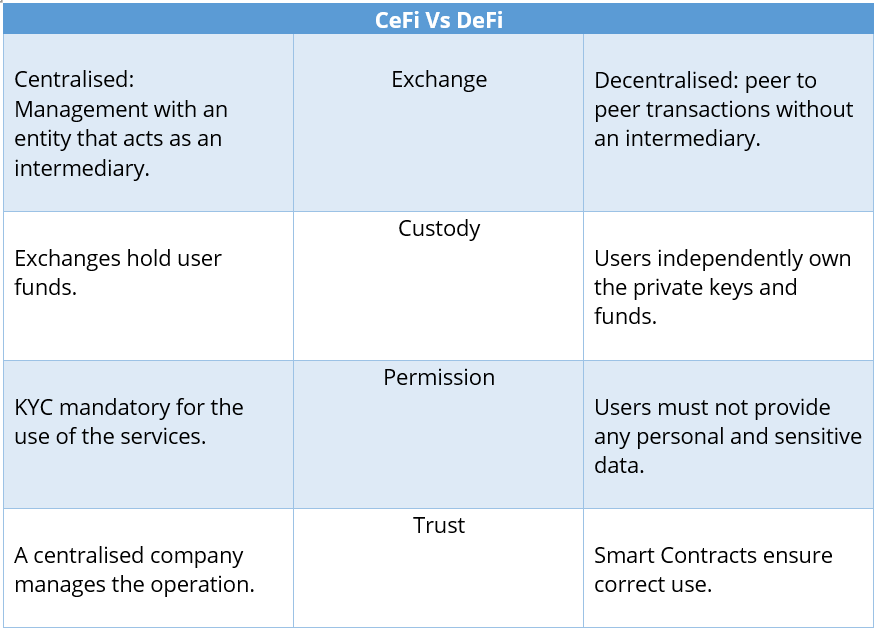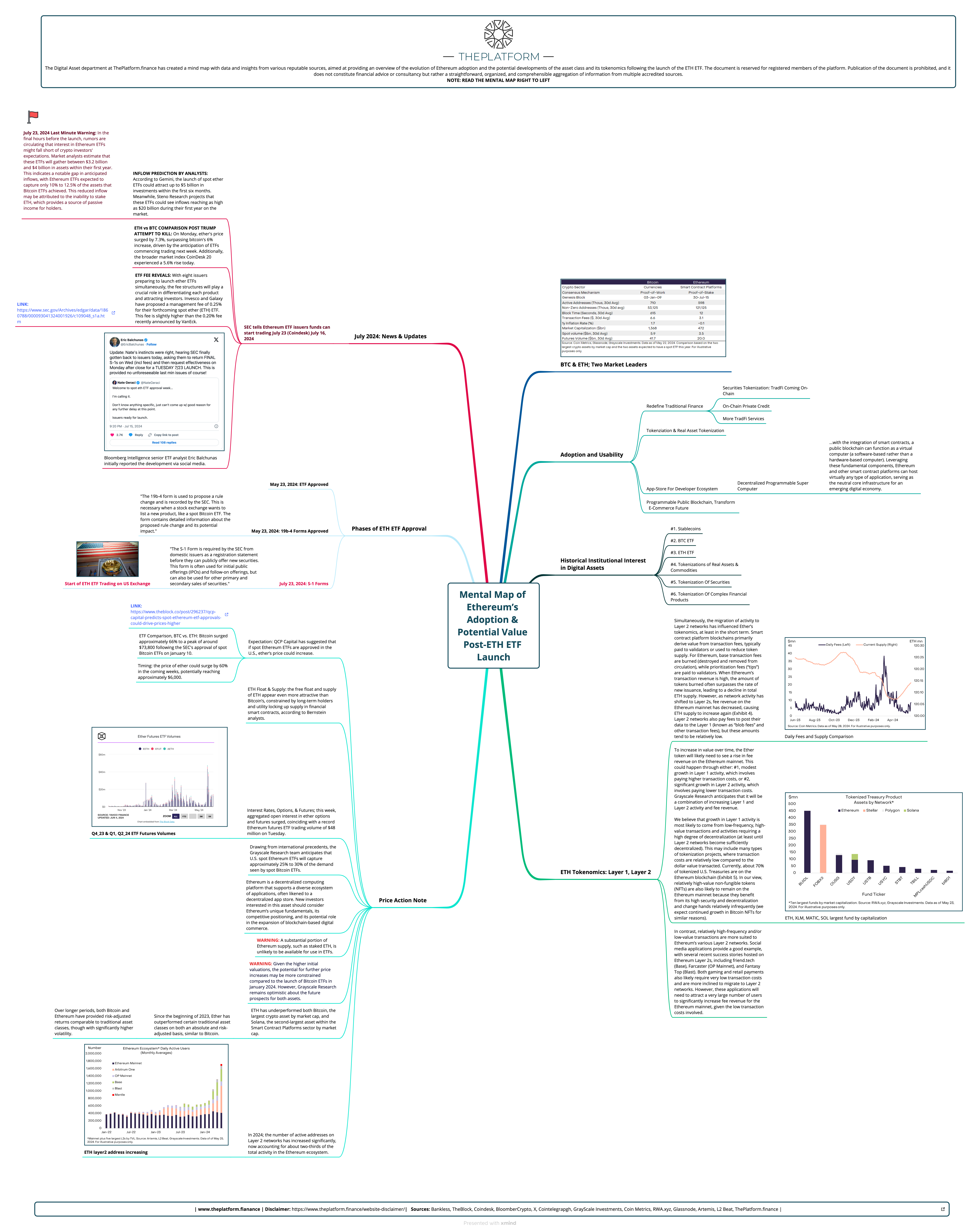Together with…

Introduction
Having reached 9th Paper of this insight series on Cryptocurrencies, digital Tokens and Decentralised Finance, and having seen and analysed the cornerstones of this new and innovative industry, it is time to review with greater knowledge and awareness some fundamental concepts that we met on our path:
- The Blockchain is a decentralised technology born in the early nineties and developed in practice with the publication of the Bitcoin protocol in 2008 with systems that are structured on a distributed ledger.
- Mining is the extraction process that allows the introduction of new digital coins into the circulating supply. The data blocks present on the Blockchain are processed and validated by a “component / node” of the chain, called miner, which has the task of solving a random sequence of letters and digits called ‘hash’. Each hash is unique and immutable.
- Digital Assets are representations of assets in digital format based on blockchain technology. They are classified into: cryptocurrencies, asset-backed tokens, utility tokens, security tokens.
- DeFi, acronym for Decentralised Finance, represents the set of financial services that exploit blockchain technology, governed by precise rules defined in “digital contracts” and operating on a decentralised system.
- Staking is the procedure that allows you to obtain rewards from the possession of cryptocurrencies by depositing and blocking them in a cryptographic protocol for a certain period of time.
- Liquidity Pools are groups of cryptographic tokens, provided by defined users (Liquidity Providers) and made available to decentralised protocols that need this liquidity to properly perform the functions for which they were designed.
- Liquidity Mining is the process that ensures, through the liquidity pool, the correct functioning of the decentralised finance services provided on exchanges defined as DEX, and it is the process by which users providing liquidity are remunerated.
- Yield Farming represents a variant of liquidity mining because it focuses only on the speculative side, that is, it does not make any fundamental contribution to the functioning of the DEX. In fact, the yield farmer, using proprietary strategies, is constantly engaged in moving their tokens across various DEX platforms in search of yield maximisation.
- Consensus algorithms are procedures designed to verify, and consequently validate, the transactions present on the different blockchains, making their functioning and intrinsic characteristics possible.
- The AMMs, Automated Market Makers, are algorithms that, in the decentralised DEX exchanges, deal with automating exchanges between cryptographic assets by defining their price and the formation of Bid / Ask price pairs. The aim of the AMMs is to eliminate the inefficiencies of the order books (traditional systems for matching the supply and demand of assets), even in the presence of very high volumes, proceeding to settle any transaction immediately.
- Smart Contracts, are applications resident on blockchains that regulate and allow the execution in a certain and unambiguous manner of specific rules defined a priori. They allow the creation of trust less protocols, so as to ensure compliance with certain commitments between several parties, without the need to know each other.
Therefore, once the fundamental concepts have been defined, let’s go back to concentrate and further investigate the fundamental element on which this innovative “industry” is based, decentralisation, trying to highlight how the original idea of Satoshi Nakamoto in the Bitcoin introduction paper has evolved over time and has given rise to a considerable amount of technologies, protocols, services and, with them, opportunities for adoption and investment.
In 2008, Bitcoin was originally developed with the aim of creating an independent currency not controlled by any central authority (governments, central banks, supra-governmental authorities), electronically transferable around the world, instantly and with extremely light transaction fees. in order to reach any individual on the planet, especially in those countries and regimes where access to the monetary and banking system is not guaranteed to the less affluent population.
From that first fundamental paper which precisely defined the original idea of BTC, two large groups of technologies have evolved;
- centralised cryptographic protocols, CeFi
- decentralised cryptographic protocols, DeFi
that, while sharing the same fundamental philosophy, and pursuing the same goal (that is to offer financial services that have as their object cryptocurrencies and digital assets), differ considerably from each other. If on the philosophical side we have already understood the idea behind the development of these innovations, on the technical side the original intent was to provide solutions to problems of inefficiency and inequality present in traditional banking and financial systems, where important operators can exploit many more advantages and having access to services and tools not accessible to small investors.
Centralised Finance aka CeFi
With the term Centralised Finance, we mean those technologies that mainly allow exchanges between FIAT currencies / cryptocurrencies and between cryptocurrencies themselves, through blockchain protocols coordinated by a central entity.
These trading activities take place through the use of platforms, developed and governed by private companies which, while respecting the mathematical / cryptographic rules of the underlying blockchain, act as intermediaries between supply and demand. Basically, in this case, albeit with more equitable rules and protocols, there is always the presence of “men in the middle”.
Some of these intermediaries, born a few years ago with the explosion of the cryptocurrency markets, have become so important and functional to this business that they have become companies listed on traditional stock exchanges (Wall Street), such as Coinbase listed in 2021 and Kraken about to go public. These companies, by providing their operating environments, their software and their IT infrastructures, allow users to operate in compliance with the recognition and regulatory procedures provided for by traditional financial systems, that is, KYC, anti-money laundering, etc.
Blockchain based services, albeit decentralised by their nature (i.e., usable even without the presence of intermediaries) in the case of CeFi are coordinated by centralised players able to provide services for users, often through simple and comfortable interfaces, and favour access to:
- Conversion of FIAT currencies into cryptocurrencies
- Exchange and trading between pairs of cryptocurrencies
- Access to cryptocurrency derivatives
- Centralised borrowing and lending on exchanges
- Payment services with cryptocurrencies
- Pegging services of its cryptocurrencies to assets considered stable, the Stablecoin.
The presence of a central operator allows a number of advantages for the end user, including:
- The direct conversion without particular complexity of cryptocurrencies into FIAT currencies
- The presence of user interfaces designed to guarantee crypto operations, easy and intuitive, adaptable to the needs of the market and able to improve the final user experience
- The possibility of password and username recovery for first level access to the user interface of the platform, and to wallets (while preserving the security of the users’ private cryptographic keys).
From the point of view of critical issues, however, these platforms have some intrinsic limitations to be carefully considered. In particular:
- DO NOT allow you to operate while maintaining total control of your assets which, at the time of the transaction, must necessarily enter a system managed by third parties (crypto intermediary involved)
- DO NOT allow tokenize real illiquid assets
- They DO NOT allow you to customise exchanges and swaps between all types of assets on the crypto markets
- DO NOT allow self-regulation of the market solely based on the choices of the majority of users and the community involved
- DO NOT allow more advanced users to carry out certain and complex types of speculation based on digital token price asymmetries
- DO NOT allow access to crypto financial services in full anonymity, an element that philosophically represents the basis of these technologies, as well as the primary advantage for those operating under non-liberal regimes.
To date, therefore, it is possible to say that CeFi services constitute an excellent “bridge”, an accessible middle way between traditional financial services and blockchain technology, capable of guaranteeing greater efficiency and higher standards of security and fairness in financial transactions. CeFi in fact allows compliance with current regulations, designed to ensure the verification of certain requirements and certain fundamental guarantees for the safety and protection of economic / financial systems, such as, for example, the control of criminal activities, the control of financing of terrorism and the tracing of capital of illicit origin in the economic system.
Decentralised Finance aka DeFi
On the opposite front we find a series of protocols and consequently of totally decentralised services – Decentralised Finance – where the presence of any entity between supply and demand is absolutely not contemplated and therefore non-existent. It is possible to think of DeFi as an attempt to build a financial system based exclusively on the characteristic of total disintermediation and self-regulation envisaged by the original idea of blockchain, where the only goal is the creation and development of cryptographic platforms and tokens such as to allow the use of financial services without the presence of any intermediary at any level.
Therefore, these are totally autonomous and decentralised organisations defined DAO (Decentralised autonomous organisation) governed by algorithms and digital contracts defined as smart contracts that provide rigid and predefined rules, able to automate services and access to them.
As analysed in the previous analysis, the characteristic of Decentralised Finance, an issue not yet addressed by international regulators, is the complete lack of procedures for the recognition and profiling of users, such as KYC or anti-money laundering procedures. DeFi services are totally decentralised and therefore free from controls by any third-party authority. The proper conduct and execution of financial transactions is exclusively guaranteed and verified by smart contracts, through the assumption “code is law”.
In order to improve the understanding of how DeFi services work, we can compare the natural operating environment of these protocols, the blockchain, to a financial market (let’s call it DeFi Market). The one currently most developed and most used is based on the Ethereum blockchain and the corresponding ETH token on which most of the DeFi platforms have been developed. However, there are other blockchains, alternatives and parallel to Ethereum, in which it is possible to access and execute totally decentralised financial services.
A particular and significant example of the exploitation of both the potentialities of the ecosystems defined so far (CeFi and DeFi) and the first example of a company to create two opposite ecosystems, sharing their users is given by Binance (Chinese giant of CeFi exchanges), which has also developed, in parallel to the primary centralised platform, with which it generates billions of dollars in revenue, a totally decentralised platform on which DeFi protocols operate, called Binance Smart Chain.
In a nutshell, we can define DeFi as an environment for using open-source software on decentralised blockchains, able to tokenize (transform into cryptographic tokens) traditional financial products, using transparent and trust less protocols that operate without intermediaries and through governance smart contract.
In DeFi, the user accesses permissionless financial services while maintaining full control of their assets and personal data, without the presence of any “no man in the middle” intermediary.
At the date of preparation of this analysis, the services accessible / available on the DAOs (DeFi world services) are:
- Decentralised exchanges
- Decentralised lending platforms
- Decentralised tokenization platforms for traditional assets
- Decentralised insurance platforms
- Decentralised payment networks
Focus on… DAO
A decentralised autonomous organisation (DAO) is software running on a blockchain that offers users an integrated model for the collective management of their code.
DAOs aim to define an operational space where rules and regulations are defined using open-source code and applied through the use of smart contracts.
Unlike traditional organisations, there is no hierarchy in DAOs. To align the interests of the organisation with those of its members, the DAOs provide for the presence of a community of users, to which any proposal for modification or change of the organisation’s rules is submitted and defined by majority.
Focus on… Binance
Binance is a private Chinese company, operating from the origins of the blockchain, and one of the most important in the world for volumes, exchanges and turnover. It deals with providing a very broad exchange service, articulated and appreciated by users from all over the world.
In its original function as an exchange, Binance is a centralised environment, meaning the company itself is, in facts, an interface between users, an intermediary.
With the development and elevation of decentralised platforms and in order not to miss the opportunity to enter the DeFi market, Binance has created a decentralised environment, a “DeFi Market” namely, called Binance Smart Chain in which the rules typical of decentralised finance, decentralisation and anonymity apply.
Conclusions
CeFi and DeFi, and with them financial services on blockchain in general, represent only one of the many developments that are evolving and developing thanks to these technologies and that can literally revolutionise the way of exchanging valuable data through decentralised cryptographic networks.
On the one hand, the international regulatory bodies are trying to regulate CeFi companies, a task not simple but at least based on some principles and rules deriving from the traditional financial sector. On the other side, the DeFi ecosystem still remains devoid of any regulation capable of increasing security and control on the “common user” side.
We therefore want to conclude with a table which, using some examples, compares the characteristics of the different types of CeFi and DeFi services, and stimulates an important reflection in the reader, that is to understand whether there may be an equitable combination between the two ecosystems suitable for encourage user access to DeFi services and innovations, passing through CeFi procedures and mechanisms. This combination could provide at the same time greater safeguards and compliance with the rules, increasing adoption, regulation and consequently contributions of capital and investments, fundamental for the developments of a new era of Digital Finance.

Source: okex.com




